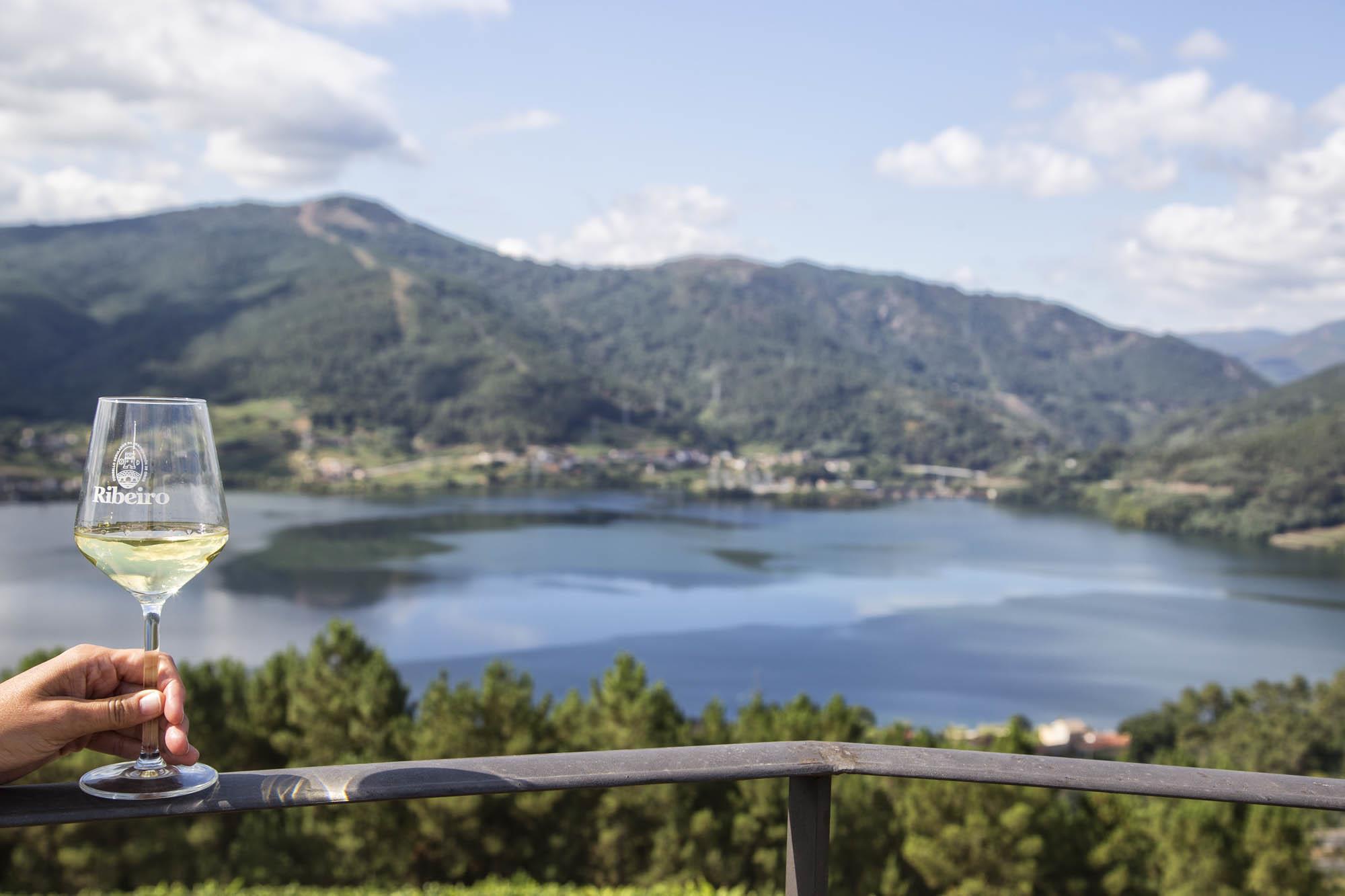Qué ver en la Ruta del Vino de O Ribeiro
En este descubrimos los orígenes y las curiosidades de la denominación de origen de O Ribeiro, la más antigua de Galicia.
A historical Apellation of origin in O Ribeiro
At the confluences of the valleys formed by the rivers Miño, Avia and Arnoia in the province of Ourense, is located he region of O Ribeiro, a land of millenary wine growing tradition.
The exuberant vegetation formed by oaks, chestnut trees and pine forests hides in many hides what were once vineyards. And while wine growing is what today configures a large part of the landscape, beyond this tradition, immense pazos, medieval bridges, churches and Romanesque chapels come out to meet the traveler as we enter the O Ribeiro Wine Route
Enclaves such as Arnoia, Boborás, O Carballiño, Castrelo de Miño, Cenlle, Leiro, Ourense, Ribadavia, San Amaro or Toén, form he territory of this wine-producing demarcation where you can learn first-hand everything related to the Ribeiro Apellation of Origin, the oldest in Galicia.
Millernaly tradition
The winegrowing has historically been the main source of wealth in the region. The origin of the Ribeiro native varieties is uncertain but it is known from the testimony of the historian and geographer Strabo that in the second half of the second century BC, wine was already made in this area of the Galician community.
The subsequent Germanic invasions marked a strong setback in the history of viticulture in the region and it was not until the High Middle Ages that the winegrowing re-emerged in O Ribeiro. During this period, the most important Galician ecclesiastical centers set up arms and priories in the area to provide Ribeiro wine to the wineries of their main sites.
In 1133, the flourishing trade and the appreciation for these wines were reflected in the approval of a decree where food prices sold in Santiago de Compostela are stated that were marketed in Santiago de Compostela appear. Among them, Ribeiro wine is detailed as the most expensive of all those were sold.
Historical splendor: from Europe to the New World
Since Roman times, the cultivation of the vineyard in O Ribeiro reached its maximum splendor in the 15th and 16th centuries, when it became one of the greatest riches of the region, since the fame and quality of its wines traveled through the Camino from Santiago, throughout Spain and Europe, reaching France, Portugal, Italy and especially Great Britain.
At that time, wines were transported mainly in carriages for shipment in Galician ports, from which they left in the direction of Europe. But the odyssey of the ribeiros did not end here, and it is that the wines of the region also sailed on the ships that took the first settlers to America, being some of the first tasted in the New World.
In fact, there is documentary evidence that they accompanied Christopher Columbus on his first expedition to the new continent, something that is not surprising, since these wines enjoyed great prestige in the Spanish Court. Proof of this is that writers of the stature of Cervantes and Quevedo brought these wines to their works.
In the 19th century, pests of American origin ravaged the region of O Ribeiro and it was then that it became necessary to graft the vines on American feet, which led to the introduction of foreign varieties, more resistant and productive, to the detriment of autochthonous varieties. . Currently, the Ribeiro is returning to its origins betting on local grapes, recovering and creating new plantations through programs of reconversion and restructuring of vineyards.
Cultural and scenic attractions
To get to know O Ribeiro better, its cultural, landscape and gastronomic attractions, we cannot fail to propose a small roadmap through its region, starting with what was once the capital of the Kingdom of Galicia. Ribadavia is a most remarkable town in this region and we will find the artistic and cultural legacy of so many centuries of life in its Jewish quarter and the Castillo de los Condes.
The thermal potential of O Ribeiro is indisputable. Thus, water takes on a special role in the municipalities of Arnoia, Cenlle, Castrelo de Miño and Ourense, where we will find numerous spas and open-air hot springs.
In this itinerary it will be essential, to visit the Parque Arqueolóxico do Mundo Castrexo de San Cibrao de Las, in San Amaro, and the high-medieval monastery of San Clodio, in Leiro, which once belonged to the Cistercian order and is closely related to the rich wine history of the area.
In Boborás we will be captivated by nature and its many medieval bridges and to taste the gastronomy of the region we will go to O Carballiño, where we will taste its famous octopus, of course, accompanied by a delicious Ribeiro.












